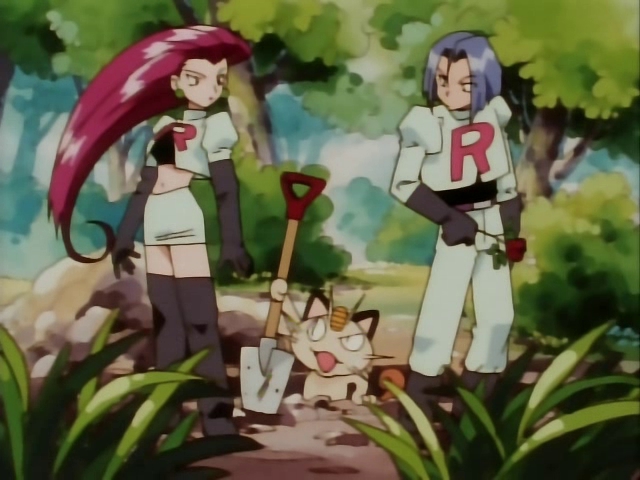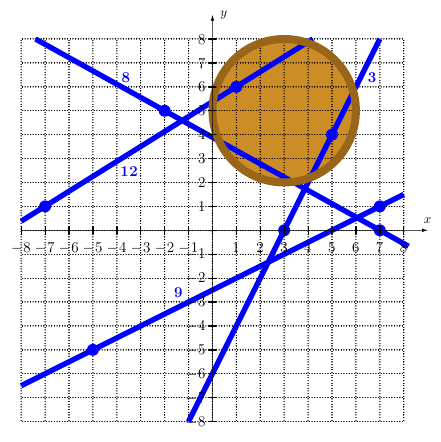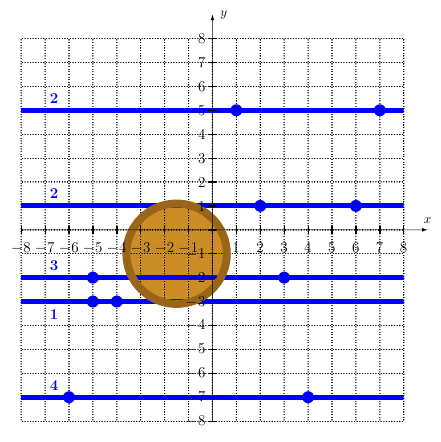WC '18 Contest 3 S4 - Holey Travels
View as PDFWoburn Challenge 2018-19 Round 3 - Senior Division

When it comes down to it, there's nothing that the members of Team Rocket enjoy more than the simple, familiar things in life. In other words, digging holes to trap Pokémon trainers and steal their Pokémon.
Today,
Pokémon trainers will be traveling
over an open field which can be represented as an infinite 2D plane. The
-th Pokémon trainer will be walking along the infinite, straight line
which passes through two distinct points
and
.
Multiple trainers may walk
along exactly the same path. Note that each path extends infinitely in
both directions (it's neither a line segment nor a ray). Team Rocket
doesn't care in which direction along this path the trainer will be
walking. What they do care about is the fact that the
-th trainer
will have
Pokémon with them!
Jessie, James, and Meowth have time to dig a single hole somewhere on
this infinite field before the trainers begin walking along their paths.
This hole will be a circle with real-valued radius
,
centered at any point (with real-valued coordinates) of their choice.
Once the hole has been dug, each trainer whose path turns out to intersect with or touch the hole's circle (inclusively) will fall into it, with all of their Pokémon becoming trapped in the hands of Team Rocket. What's the maximum number of Pokémon which Team Rocket can trap by choosing an optimal excavation location?
Subtasks
In test cases worth of the points,
.
In test cases worth another of the points,
.
Input Specification
The first line of input consists of a single integer, , and one real
number,
.
lines follow, the
-th of which consists of five space-separated
integers,
,
,
,
, and
, for
.
Output Specification
Output a single integer, the maximum number of Pokémon which Team Rocket
can trap. It's guaranteed that increasing or decreasing by up to
would not change the answer.
Sample Input 1
4 3.0
3 0 5 4 3
-2 5 7 0 8
-5 -5 7 1 9
1 6 -7 1 12Sample Output 1
23Sample Input 2
5 2.1
2 1 6 1 2
3 -2 -5 -2 3
7 5 1 5 2
-5 -3 -4 -3 1
-6 -7 4 -7 4Sample Output 2
6Sample Explanation
The following diagram illustrates the first case, with the Pokémon
trainers' paths indicated in blue, and one possible optimal hole
location (trapping Pokémon) indicated in brown:

The second case is similarly illustrated below:

Comments